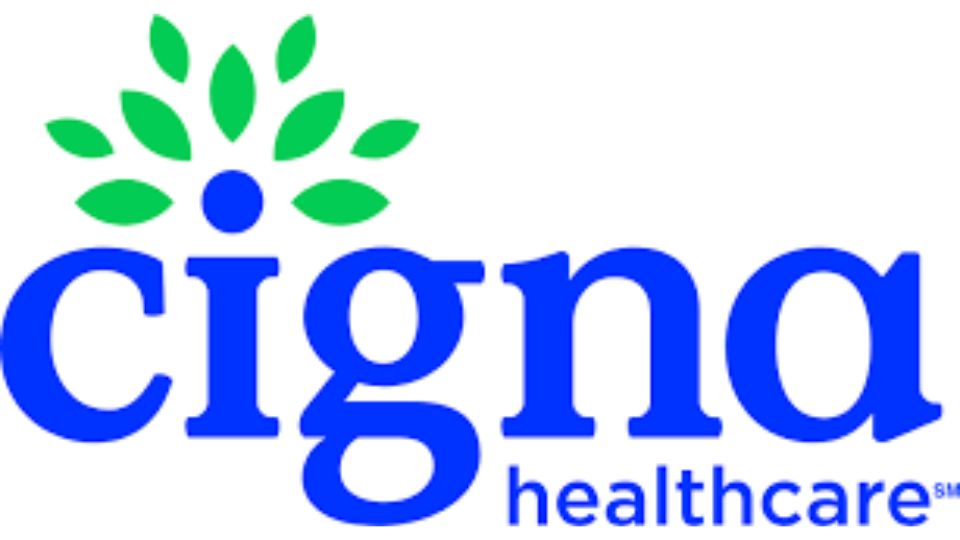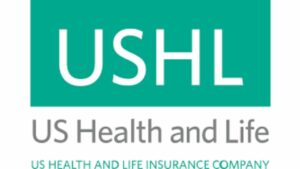All You Need to Know About Cigna Plans for 2024
When you shop for health insurance, you want to know you have the best health insurance at the lowest cost. However, searching on your own may seem like an endless process. Seeing how deductibles vary, coinsurance levels differ, and how premiums keep rising makes selecting your company more difficult. If you have landed here, you are contemplating Cigna healthcare. We at CoverMile have done the hard work for you. We aim to help you understand what Cigna has to offer and help you determine if they are the insurance provider for you and your family.
Health Insurance Terms to Understand
Before we dive in, let’s begin by defining a few terms you will frequently see but may not completely understand. This will help you select the best health coverage that fits your situation.
Deductible – A deductible is the amount you pay out of pocket before your insurance kicks in. Cigna has deductibles from $0 up to $9450, depending on your plan. Deductibles are based on the calendar year and refresh each year. They also determine your overall cost. The higher your deductible, the lower your premium; the lower your deductible, the higher your premium. Deductibles are broken down into two parts:
Individual:This is the per-person deductible.
Family:This is the deductible for the entire family.
This will be shown on your Summary of Benefits, often in fraction form. For instance, $750 Individual/$1500 Family, or simply $750/$1500. Each family member has their own $750 out-of-pocket expense to reach. You can read more about deductibles through the link above.
Coinsurance – This is where your insurance kicks in. It is cost sharing between you and the insurance company, usually based on a percentage. With Cigna Insurance, it will be listed as “40% coinsurance” or just “40%”, whatever your policy’s coverage level is. This is the portion you will pay. It, too, is refreshed each year. Understand that on a Summary of Benefits, when you see a percentage, it means after your deductible is met unless otherwise specified.
Out-of-Pocket Max – All insurance plans have a failsafe. It’s called the out-of-pocket max. It is designed to help policy owners with medical conditions and those who visit the doctor regularly. When you reach your deductible, pay through your coinsurance, and then reach your policy’s out-of-pocket maximum, Cigna will pay 100 percent of medical expenses for that individual for the remainder of the calendar year. Once the family out-of-pocket max is met, then everyone on the policy is covered, even if they have not met their individual deductible or not.
Primary Care Physician– Your Primary Care Physician (PCP) is the main doctor you visit for your medical care. With Cigna, an HMO, you are required to coordinate your treatment through them. You can only see an out of network doctor if it is medically necessary and with Cigna’s approval.
Copay –Copays are the amount you pay a doctor or medical facility for your visit. This can be a flat dollar amount or a percentage, and it will vary by plan. Keep in mind this is for the office visit alone, not the treatment received. However, insurance plans can include some benefits, such as well check-ups and immunizations, at no extra cost.
Now that you have reviewed the basics of health insurance, let’s get into Cigna’s plans.
Cigna and the Affordable Care Act
Cigna offers health insurance in Texas as part of the Affordable Care Act. They offer plans on all three metal levels: Bronze, Silver, and Gold. You can purchase plans through the Marketplace as well as directly on the Cigna website. They have the same plan selection as well as a handful of off-market plans available.
Below, we’ve listed a variety of Cigna health plans. For the sake of space, we’re only listing plans based on deductible, coinsurance, and out-of-pocket max. Also, to simplify our table, you will see the Individual and Family deductibles and out-of-pocket max expressed as a fraction. The first number is your Individual deductible, and the second is your Family. Be aware that these numbers are for in-network doctors and facilities.
Cigna’s Bronze tier offers five plans. Bronze is the lowest coverage tier and has the highest out-of-pocket max and coinsurance. Bronze plans are best for those who are healthy and do not see the doctor often but want to have health insurance in place for when they get sick or the unexpected occurs.
| Bronze | Cigna Connect 9450 | Cigna Connect 8500 | Cigna Connect 5500 | Cigna Connect CMS Standard |
| Deducible | $9450/$18,900 | $8500/$17,000 | $5500/$11,000 | $7500/$15/000 |
| Coinsurance | 0% | 50% | 50% | 50% |
| Out-of-Pocket Max | $9450/$18,900 | $9450/$18,900 | $9450/$18,900 | $9400/$18,800 |
| Primary Care Visit | 0% after deductible | $0 copay | $35 | $50 |
| Specialist Visit | 0% after deductible | 50% | 50% | $100 |
| Virtual Visit | $0 copay | $0 copay | $0 copay | $0 copay |
| Emergency Room | 0% after deductible | 50% | 50% | 50% |
| Urgent Care | 0% after deductible | $75 copay | $75 copay | $75 copay |
| Inpatient Hospital | 0% after deductible | 50% | 50% | 50% |
| Outpatient Hospital | 0% after deductible | 50% | 50% | 50% |
| Prescription (Pharmacy) | All RX 0% coinsurance after deductible | $3/50%/ 50%/50% | $10/$30 50%/50% | $25/$50/$100 /$200 |
*Prescriptions are Preferred Generic, Generic, Preferred Brand, Non-Preferred Brand, and Specialty.
Cigna Silver metal tier offers 20 plans; all are offered through the Affordable Care Act Marketplace. Silver medal plans allow applicants to apply for tax credits and cost-sharing reductions when they qualify based on their income level and family situation.
| Silver – Connect | Cigna Connect Silver-4 -725 | Cigna Connect 3000 | Cigna Connect 5000 | Cigna Connect 7000 |
| Deducible | $725/$1450 | $3000/$6000 | $5000/$10,000 | $7000/$14.000 |
| Coinsurance | 0% | 50% | 40% | 0% |
| Out-of-Pocket Max | $725/$1450 | $9400/$18,900 | $9100/$18,200 | $7000/$14,000 |
| Primary Care Visit | $10 copay | $0 copay | $15 copay | $45 |
| Specialist Visit | $20 | $95 copay | $70 copay | $100 |
| Virtual Visit | $0 copay | $0 copay | $0 copay | $0 copay |
| Emergency Room | 0% | $1,450 copay | 40% | 0% after deductible |
| Urgent Care | $25 copay | $45 copay | $55 copay | $70 |
| Inpatient Hospital | 0% coinsurance | 50% coinsurance | 40% | 0% after deductible |
| Outpatient Hospital | 0% coinsurance | 50% coinsurance | 40% | 0% after deductible |
| Prescription (Pharmacy) | $3/$9/0%/0%/ 0% | $3/$40/$100/ 50%/50%* | $3/$40/$100/ 50%/50%* | $3/$40/$0%/ 0%/0%* |
*Prescriptions are Preferred Generic, Generic, Preferred Brand, Non-Preferred Brand, and Specialty.
| Silver – CMS | Cigna CMS Standard Silver -4 | Cigna CMS Standard Silver -2 |
| Deducible | $0/$0 | $5700/$11,400 |
| Coinsurance | 25% | 40% |
| Out-of-Pocket Max | $1800/$3600 | $7200/$14,400 |
| Primary Care Visit | $0 copay | $40 copay |
| Specialist Visit | $10 copay | $80 |
| Virtual Visit | $0 copay | $0 copay |
| Emergency Room | 25% coinsurance | 40% coinsurance |
| Urgent Care | $5 copay | $60 copay |
| Inpatient Hospital | 25% coinsurance | 40% coinsurance |
| Outpatient Hospital | 25% coinsurance | 40% coinsurance |
| Prescription (Pharmacy) | $0/$15/$50/$150/* | $20/$40/$80/$350* |
*Prescriptions are Preferred Generic, Generic, Preferred Brand, Non-Preferred Brand, and Specialty.
Cigna Gold has three basic health insurance plans. Gold-tiered plans provide the highest level of coverage. This includes low deductibles, copays, and overall cost of insurance. They are best suited for those with medical conditions requiring frequent doctor’s visits and advanced medical care. However, this level of care comes with a higher price tag.
| Gold | Cigna Connect 3500 | Cigna CMS Standard |
| Deducible | $3500/$7000 | $1500/$3000 |
| Coinsurance | 30% | 25% |
| Out-of-Pocket Max | $5700/$11,400 | $8700/$17,400 |
| Primary Care Visit | $25 copay | $30 copay |
| Specialist Visit | $50 copay | $60 |
| Virtual Visit | $0 copay | $0 copay |
| Emergency Room | 30% coinsurance | 25% coinsurance |
| Urgent Care | $75 copay | $45 copay |
| Inpatient Hospital | 30% coinsurance | 25$ coinsurance |
| Outpatient Hospital | 30% coinsurance | 25% coinsurance |
| Prescription (Pharmacy) | $3/$15/$50/50%/ 50%* | $15/$30/$60/ $250/$250* |
*Prescriptions are Preferred Generic, Generic, Preferred Brand, Non-Preferred Brand, and Specialty.
Native American and Alaskan Native Plans
Cigna offers plans designated for NA/AN Indians. They generally offer $0 deductibles for those who are either a member of a federally recognized Native American tribe or an Alaska Native enrolled in a plan purchased through the Marketplace. Other than the lower deductible, benefits are identical to the other insurance plans Cigna offers.
Cigna Supplemental Insurance
Cigna offers a variety of supplemental insurance options. Among them are Accident Treatment Insurance, Lump Sum Heart Attack and Stroke Insurance, Lump Sum Cancer Insurance, Cancer Treatment Insurance, Hospital Indemnity Insurance, and Whole Life Insurance to assist with final expenses due to accidental death or illness.
Finding a Doctor or Facility in Your Network
Through your Cigna health insurance plan, you are required to remain within your physician and hospital network to receive benefits. You can only use out-of-network doctors and facilities in the event of an emergency. For instance,
- Let’s say you have a Silver Connect 5000 plan. Your copay to see an in-network primary care physician is $30. However, you choose to see an out-of-network doctor and have a couple of tests done in the doctor’s office. Under your Cigna insurance plan, you will not be covered for that doctor’s visit because it was not an emergency.
- If you are away from home and experience a medical emergency and cannot get to an in-network facility, you can visit a hospital or urgent care facility and pay your normal in-network benefit rate. However, it is important to notify Cigna of your emergency to coordinate your benefits.
Cigna allows you to search for doctors and facilities near you through the myCigna website and app. You can see their ratings, figure out cost estimates for treatment, and have access to your insurance ID card.
As noted, the above are just a few available plans from each medal option. For a complete list of the Affordable Care Act plans, follow the links below.
Benefit Notices:
Keep in mind that the above is a summary of highlights only.
–The benefits above represent what a member would pay. When a non-participating provider is used, benefits are reduced, or you may not have coverage at all.
–You are required to pay all the costs up to the deductible amount before your plan begins to pay for covered services. What is shown is the per-person deductible and out-of-pocket maximum. Deductibles do not apply to services where only copays are charged.
–All percentages shown are of the allowable amount for covered services.
–Cigna Healthcare provides access to dedicated virtual care. Providers are responsible for treatment provided to their patients. Video chat may not be available in all areas or with all providers.
–Prescriptions are Preferred Generic, Generic, Preferred Brand, Non-Preferred Brand, and Specialty.
–Refill by text is only available on certain prescriptions.
–On Tier 5 medication, one cannot receive more than a 30-day supply. Coverage for some drugs may also be limited.
–Cigna Rewards – Cigna Take Control is a program where subscribers can earn points and up to $350 cash to spend on health-related items. Cigna Health Rewards is a discount program where members can sign up for a gym membership, obtain LASIK surgery, or hearing exams and aids.
Cigna offers a Dental add-on for its subscribers. This plan offers benefits for different types of insurance shoppers. Waiting periods for advanced services range from six months to one year, depending on the service.
Low Deductible Plans
- $0-$50 deductibles
- Up to $1,500 in benefits
- $0 dental check-ups, including cleanings and routine x-rays
- Orthodontia is available on select plans
- See any dentist you’d like, but save more with an in-network dentist
High Annual Max Plans
- $100-$250 deductibles
- Up to $5,000 in benefits
- $0 dental check-ups, after deductible, including cleanings and routine x-rays
- See any dentist you’d like, but save more with a dentist
Bundled Plans – with Dental, Vision, and Hearing
- $50-$100 deductibles
- Up to $2,500 in dental benefits
- Up to $300 in vision benefits
- Up to $700 in hearing benefits
- Dental implants available on select plans
- See any dentist you’d like, but save more with a dentist
Prescription Coverage with Cigna
In accordance with the Affordable Care Act, all Cigna Plans customers receive Prescription coverage. Each plan has varied coverage, tiers, and benefits.
- Express Scripts Program – Home delivery of your prescription medication. You can have auto refill and up to a 90-day supply ordered with doctor’s approval.
- Accredo pharmacy – A special Cigna pharmacy that provides personal service to members with chronic medical conditions.
- 24/7 Customer Support – If you have questions about your coverage or a prescription you are taking. This includes the Virtual Care benefits.
- 90-day Supply – Receive a 90-day supply of your prescription to save on your medication cost.
- Price Your Medication – Cigna has a tool for you to look up medications covered by your plan to help you find the lowest cost and find alternatives to high-cost prescriptions.
Cigna can help you find a pharmacy in your area through its website.
At CoverMile, we desire to help you find the best health insurance in Texas that suits you and your family. We will guide you through each Cigna plan and help you sign up for Affordable Care Act insurance. Contact us today.
Frequently Asked Questions
-
Is Cigna available in the entire state of Texas?
Currently, Cigna only operates in 11 Texas counties. Among these are Dallas, Lubbock, El Passo, and Tarrant. Visit their website for a full list of counties they serve. It is important to note that if you travel outside of your local area, Cigna only covers you in the event of an emergency.
-
Does Cigna cover Diabetes in Texas?
Yes, Cigna covers Diabetes. In fact, Cigna has its own schedule of benefits for those with Diabetes. They also have a schedule of benefits for those with Asthma and COPD.
-
Is Cigna an EPO or an HMO?
Cigna is an EPO in many states, but in Texas, Cigna health insurance is an HMO. An EPO restricts you to only a network of physicians and facilities. An HMO is less restrictive and sometimes allows you to be treated in a non-network facility with the insurance company’s approval. In emergency situations, all networks allow you to be treated with no restrictions.
-
How to Cancel Cigna.
To cancel your Cigna health insurance policy, you must notify the company in writing at least seven days prior to the renewal date of your new policy. You can email the company or send them a letter. In both cases, you need to include your full name, email address, and policy number.
-
Does Cigna cover Dental and Vision?
Cigna’s base plan does not charge for Children’s eye exams and glasses. This goes a step further than the mandated 10 Essential Benefits of the ACA which just calls for pediatric dental and vision care. Cigna then takes their plan a step further, their add-on benefit is offered to both children and adults. Their higher tiered Dental plan also offers Vision and Hearing benefits.




